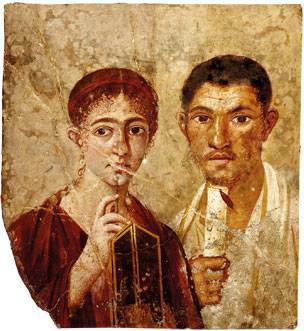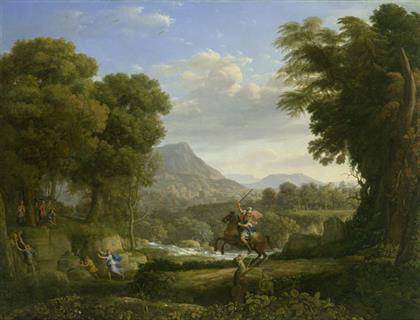
Portrait of baker Terentius Neo and his wife.
Pompeii, AD 55–79.
© DeAgostini/SuperStock.
Life and death, Pompeii & Herculaneum- British Museum The British Museum presents a major exhibition on the Roman cities of Pompeii and Herculaneum, the first ever held on these important cities at the British Museum. 28 March – 29 September 2013]]>
Source: British Museum
The exhibition is the result of close collaboration with the Archaeological Superintendency of Naples and Pompeii, brings together over 250 fascinating objects, both recent discoveries and celebrated finds from earlier excavations. Many of these objects have never before been seen outside Italy. The exhibition has a unique focus, looking at the Roman home and the people who lived in these ill-fated cities.
“Life and death in Pompeii and Herculaneum” gives visitors a taste of the daily life of the people of Pompeii and Herculaneum, from the bustling street to the family home. The domestic space is the essential context for people’s lives, and allows us to get closer to the Romans themselves. This exhibition will explore the lives of individuals in Roman society, not the classic figures of films and television, such as emperors, gladiators and legionaries, but businessmen, powerful women, freed slaves and children. One stunning example of this material is a beautiful wall painting from Pompeii showing the baker Terentius Neo and his wife, holding writing materials showing they are literate and cultured. Importantly their pose and presentation suggests they are equal partners, in business and in life.
The emphasis on a domestic context also helps transform museum artefacts into everyday possessions. Six pieces of wooden furniture are lent from Herculaneum in an unprecedented loan by the Archaeological Superintendency of Napels and Pompeii. These items were carbonized by the high temperatures of the ash that engulfed the city and are extremely rare finds that would not have survived at Pompeii – showing the importance of combining evidence from the two cities. The furniture includes a linen chest, an inlaid stool and even a garden bench. Perhaps the most astonishing and moving piece is a baby’s crib that still rocks on its curved runners.
The exhibition includes casts from in and around Pompeii of some of the victims of the eruption. A family of two adults and their two children are huddled together, just as in their last moments under the stairs of their villa. The most famous of the casts on display is of a dog, fixed forever at the moment of its death as the volcano submerged the cities.
Related content
The Last Days of Pompeii: Decadence, Apocalypse, Resurrection – at the Getty Museum (exhibition, 2012)
Follow us on:


